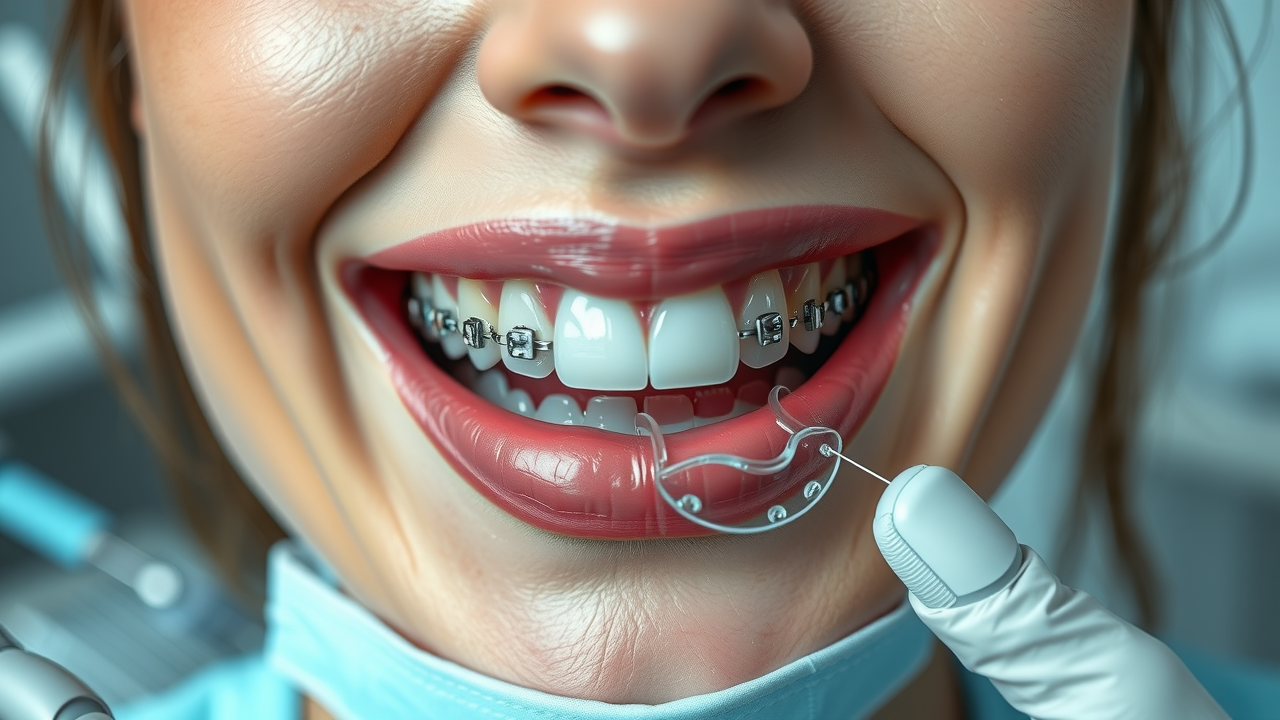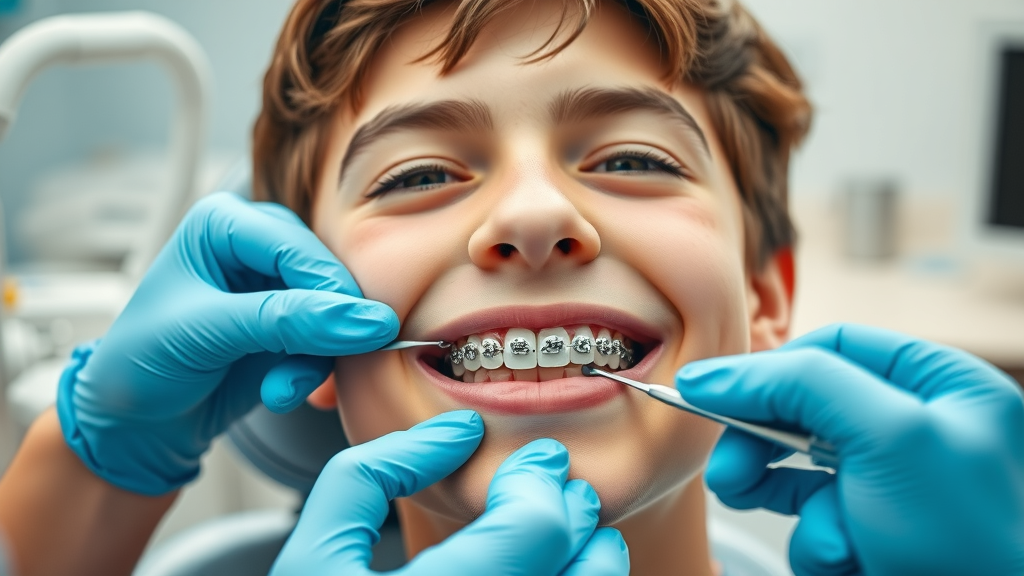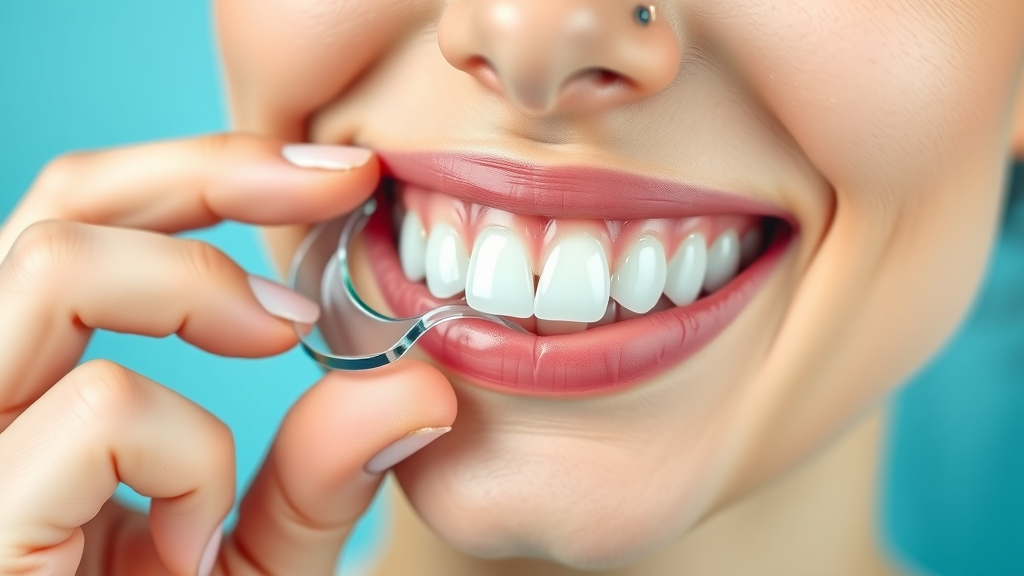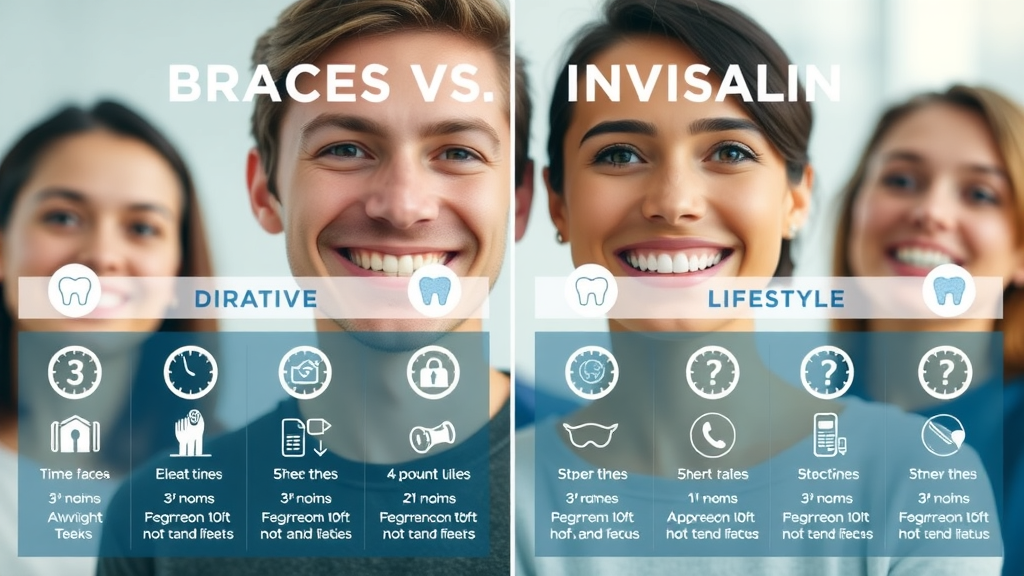"How quickly can you achieve your dream smile? Explore the real-world facts behind braces vs Invisalign: which works faster? The answer could surprise you."
Curious if you can fast-track your perfect smile? Millions have asked, “Braces vs Invisalign: which works faster?” The answer just might change what you think about modern orthodontic treatment. In this comprehensive guide, we’ll break down the facts so you can make a choice that fits your lifestyle, your goals, and your smile journey. Let’s dive in — and discover the speed behind your future smile!
Braces vs Invisalign: Which Works Faster? Key Differences To Consider
-
Traditional braces use metal wires and brackets to shift teeth, while Invisalign aligners rely on clear plastic trays that are nearly invisible.
-
Invisalign aligners are removable, allowing greater flexibility, whereas braces stay on until treatment is completed by your dentist or orthodontist.
-
The method of movement and level of control can impact overall treatment time in both systems.
-
Treatment plans are highly personal and depend on the severity of the dental issue, patient compliance, and lifestyle.

Choosing between traditional braces and Invisalign aligners is about more than looks—it’s about how efficiently each method can straighten your teeth and fit into your life. Traditional braces, with their visible metal wires and brackets, are known for their ability to tackle complex orthodontic cases, guiding even the most crooked teeth into line. On the other hand, Invisalign aligners are designed using clear plastic , offering discretion and the unique ability to remove them when you eat or clean your teeth. Your ideal treatment time will depend on factors like how severe your alignment issues are, how diligent you are with your aligners, and your age. Understanding these differences can help you decide which option works faster for you, all while matching your priorities for comfort and appearance.
Understanding Orthodontic Treatment and How It Impacts Speed
What Is Orthodontic Treatment? A Brief Overview
Orthodontic treatment refers to specialized dental care aimed at repositioning teeth and correcting bite issues using various devices like traditional braces or Invisalign aligners . Whether you’re seeking straighter teeth to boost your confidence or to improve oral health , both options use controlled pressure to gradually move teeth to their desired positions. It’s a highly effective process, and your dentist or orthodontist will create a custom treatment plan based on your specific needs. From metal braces to removable aligners , all approaches follow similar principles: realignment, stability, and retention.
The choice between braces and Invisalign is not one-size-fits-all. While both ultimately achieve a straighter smile, each has unique mechanics and requirements. Braces use brackets and wires fixed to the teeth, while Invisalign leverages a series of clear aligners that fit snugly over your teeth. Treatments can be designed for mild to moderate issues or complex corrections, and your orthodontic treatment plan will outline how each approach can work faster or more effectively given your case.
Factors That Influence Treatment Time With Braces and Invisalign
-
Type and severity of dental issues: Treating severe crowding or bite problems typically takes longer for both systems. Simple alignment can mean faster results, often favoring Invisalign for mild to moderate cases.
-
Patient compliance: Invisalign aligners require wear for 20–22 hours daily. If not worn as prescribed, treatment time can increase. Braces, being fixed, remove some compliance concerns but still require diligence with oral care.
-
Age and lifestyle: Younger patients typically experience faster tooth movement. Adults and teens with busy or unpredictable routines may favor one system’s flexibility over the other for a more streamlined treatment time.
-
Daily habits: Diet, oral hygiene, and adherence to appointments with your dentist or orthodontist all play a role in accelerating or prolonging your orthodontic treatment journey.
Traditional Braces: Are They Faster Than Invisalign?
How Traditional Braces Work to Straighten Teeth Quickly
Traditional braces use a system of metal brackets affixed to the teeth and interconnected by metal wires . These wires are periodically tightened to apply gentle, constant pressure, causing teeth to gradually move into improved alignment. The strength and control offered by braces are especially beneficial for complex cases, such as severe crooked teeth , bite corrections, or closing wide gaps. Because braces remain fixed, they are always at work, eliminating worries about removing or misplacing them and often helping cases progress smoothly. For patients committed to faster results and who don’t mind visible appliances, braces can be highly effective.
Another advantage is the predictability. Since the orthodontist directly adjusts the wires and brackets at each visit, traditional braces give professionals more control over the movement of each individual tooth. This hands-on approach allows for continuous progress assessments and immediate corrections, which can be important for those who want to work faster toward their ideal smile. For many, especially those with challenging orthodontic needs, traditional metal braces are a tried-and-true choice for efficient teeth straightening.
Common Treatment Timeframes for Traditional Braces
The timeframe for traditional braces typically ranges from 18 to 36 months , with many patients seeing significant improvements in their treatment time after the first year. However, factors like the severity of the alignment problem, patient age, and oral hygiene all play a role in the duration of orthodontic treatment. In some minor cases, results can even appear as quickly as 12 months, making braces an attractive option for those looking for consistently reliable and faster results .

It’s also important to remember that braces are effective not just for straightening teeth but for correcting complex jaw positions and rotations. This comprehensive scope can mean a slightly longer treatment time for intricate adjustments, but often with long-lasting, stable results. If you’re seeking highly customizable care with close professional supervision, braces are a proven contender for straightening teeth efficiently and effectively.
Invisalign Aligners: Are They Faster Than Braces for Orthodontic Treatment?
The Invisalign Process: How Aligners Work For Straighter Smiles
Invisalign aligners represent a breakthrough in modern orthodontic treatment , using a series of clear plastic trays to gently and gradually move teeth. Unlike braces, which use fixed hardware, these removable aligners offer patients the freedom to eat, brush, and floss as usual. Each aligner in the series is slightly different, moving your teeth closer to their goal position every one to two weeks, according to a precise treatment plan designed by your dentist or orthodontist. This means you replace the tray regularly, and if worn for 20–22 hours daily , Invisalign can often move teeth just as effectively as traditional braces—especially for mild to moderate changes.
Perhaps the biggest advantage of Invisalign aligners is their discretion and flexibility. The clear aligners fit comfortably over your teeth, and their transparent appearance makes them virtually invisible in daily life. For many patients who value aesthetics or must attend social and professional events, these aligners offer a confident alternative without the dietary restrictions of metal braces. The key to achieving faster results with Invisalign is consistent, disciplined wear—removing the aligners only to eat or perform daily hygiene routines.
Average Treatment Times for Invisalign Aligners
The average treatment time for Invisalign aligners ranges between 12 and 18 months , although some cases, especially those involving mild to moderate crowding or spacing, can be completed in as little as six months. Many adults and teens appreciate the faster than braces results possible with Invisalign—provided the aligners are worn as prescribed. Because aligners are removable, patient compliance is crucial; neglecting to wear them as directed can result in longer completion times. For the right candidate, however, Invisalign can deliver a remarkably efficient and convenient straightening experience.

It’s important to note that while Invisalign is suitable for a broad range of alignment needs, it may not be ideal for the most complex changes or severe rotations. In such cases, traditional braces may outperform aligners in both speed and final outcomes. A personalized consultation with an orthodontic expert is the best way to determine which system will work faster and fit best with your smile journey.
Braces vs Invisalign: Which Option Is Likely to Work Faster For You?
Comparing Braces and Invisalign For Different Orthodontic Needs
-
Mild crowding: Invisalign often delivers quick, predictable results. When teeth need only small adjustments, aligners are likely to work faster, provided they are worn consistently.
-
Complex cases: Severe misalignments, bite corrections, or rotations generally respond faster to traditional braces, as orthodontists have more direct control over movement.
-
Adult vs teen treatment: Both braces and Invisalign work effectively for all ages, but younger patients may experience faster teeth movement due to ongoing jaw growth, while adults might prefer discretion and flexibility.
-
Special situations: If your work, diet, or habits demand a removable solution, Invisalign could speed up your journey by fitting better into your lifestyle.
Ultimately, the answer to braces vs Invisalign: which works faster for you depends on your clinical needs, daily routine, and the level of commitment you can offer to your treatment plan . Some people experience notably quicker progress with braces, especially in complex cases or if there is a risk of inconsistent aligner wear. However, for committed and compliant patients with minor corrections, Invisalign can sometimes be faster than braces —an idea supported by growing real-world evidence and clinical studies.
Work Faster: What the Studies Reveal About Treatment Duration
"Recent research shows the average difference is closer than most expect—sometimes as little as a few months between braces and Invisalign."
Clinical data now indicate that when patient compliance is high, Invisalign and braces can result in comparable treatment lengths, especially for less complex cases. Most studies suggest Invisalign aligners may finish treatment in six months to a year faster for mild crowding or spacing. However, as the complexity of the case increases, the lead time for traditional braces grows, as their fixed structure is highly effective in addressing even the most challenging scenarios. Your individual potential for faster results will therefore rely on both your unique dental situation and your dedication to following your orthodontist’s advice.
Breaking Down Treatment Time: Braces vs Invisalign Table
|
Orthodontic Method |
Average Treatment Duration |
Appointment Frequency |
Lifestyle Restrictions |
|---|---|---|---|
|
Traditional Braces |
18 – 36 months (complex cases may take longer) |
Every 4–8 weeks with adjustments |
No sticky/hard foods, extensive cleaning routine, visible hardware |
|
Invisalign Aligners |
12 – 18 months (mild cases may be 6 months) |
Every 6–10 weeks for progress checks |
Minimal, removable for eating/cleaning, must wear 20–22 hours daily |

Expert Opinions: Do Fast Braces Work Faster Than Invisalign?
"For cases requiring rapid alignment, fast braces and Invisalign both have strengths. Choosing the right option depends on your unique needs." – Dr. Smith, Orthodontic Specialist
Expert orthodontists agree: accelerated systems like Fast Braces or advanced Invisalign aligners both have benefits for speed, but suitability is case-dependent. Fast Braces utilize unique technologies like special brackets and flexible wires that can sometimes align teeth in as little as three to six months for eligible cases. Meanwhile, newer Invisalign treatment protocols now pair virtual check-ins and optimized attachments that mirror the efficiency of advanced brace systems for mild and moderate issues.
Consulting with a specialist helps you uncover which approach will work faster, more comfortably, and more predictably for your particular set of teeth and lifestyle goals. Personalized care and dedication remain the best predictors of a successful and speedy orthodontic journey.
Advantages and Disadvantages: Braces and Invisalign Aligners Speed List
-
Advantages of Traditional Braces: Best for complex or severe cases, non-removable ( always working ), close orthodontist management for predictable progress.
-
Advantages of Invisalign: Discreet clear aligners, removable for eating and oral hygiene, often faster for mild to moderate corrections, minimal lifestyle change.
-
Drawbacks to Consider: Braces come with dietary restrictions and are highly visible; Invisalign requires strict compliance (20–22 hours daily) and may take longer for complex cases or if not worn as directed.
In evaluating braces and Invisalign , understanding each system’s strengths and limitations can help you make a confident choice and set realistic expectations for your treatment time.
Patients’ Stories: Achieving Better Results With Braces or Invisalign
-
Case Study 1: “After 14 months with Invisalign, my smile was transformed—and the aligners were hardly noticeable at work or in photos!”
-
Case Study 2: “My teen needed major alignment, so we chose traditional braces. The orthodontist made monthly adjustments, and we saw steady progress. In just under two years, the result was perfect!”
-
Case Study 3: “I started with braces but switched to Invisalign halfway through. My dentist said it helped speed up the remaining minor adjustments. Finishing sooner than I thought!”

Real patient experiences underscore the importance of choosing a system that fits your lifestyle and compliance capability. For every person amazed by the invisibility and comfort of Invisalign, there’s another thrilled with the reassurance and predictability of braces, especially when correcting significant orthodontic issues.
People Also Ask: Do braces work faster than Invisalign?
Braces vs Invisalign: Which Works Faster According to Research?
-
Multiple clinical studies now reveal that for mild to moderate teeth crowding or spacing, Invisalign aligners may complete treatment in less time than braces—sometimes by as much as 6–12 months. For complex adjustments, however, traditional braces tend to work faster due to the direct mechanical leverage offered by their fixed components.
-
Research and orthodontist insights agree: consistent patient participation dramatically influences speed for both systems. Wearing clear aligners as directed or attending regular braces adjustments is key to timely results.
Ultimately, the fastest path is always a customized plan managed by your dentist or orthodontist. Advances in both systems continue to shrink the speed gap as technology evolves.
Are fast braces better than Invisalign?
-
Fast braces are designed to accelerate traditional straightening using innovative brackets and wires, targeting rapid realignment for eligible cases.
-
Compared side by side, fast braces can align teeth quickly for simple cases, while Invisalign offers almost invisible treatment and removes restrictions for eating and cleaning.
-
Your orthodontist will evaluate your unique needs and recommend which system fits your goals for speed, appearance, and daily convenience.

FAQs: Braces vs Invisalign – Speed, Effectiveness, and Your Choice
-
How much faster is one treatment over the other?
For mild to moderate corrections, Invisalign aligners sometimes finish 6–12 months sooner than traditional braces. For complex cases (like major bite shifting), braces may be the faster and more effective choice. -
Can you switch from braces to Invisalign for faster progress?
Yes! Many patients transition to clear aligners once most major movements are complete. Your orthodontist will guide you if this hybrid approach could work faster for your situation. -
Which is best for teens vs adults?
Teens may benefit from braces for compliance reasons, while adults often favor Invisalign aligners for their subtle appearance and flexibility. Both systems can deliver effective, timely results when matched to patient needs and habits.
Making the Right Choice: Factors Beyond Treatment Time
-
Lifestyle: Do you play sports, socialize often, or value an invisible solution?
-
Budget: Costs for braces and Invisalign vary; discuss options with your provider and check insurance eligibility.
-
Oral hygiene: Aligners are removable, making it easier to maintain oral health . Braces demand meticulous cleaning for best results.
-
Appearance: Clear aligners are nearly invisible; braces are more noticeable but highly effective.
-
Comfort: Every mouth is different—ask about your specific comfort and adjustment needs before deciding.
-
Long-term retention: Retainers or nighttime aligners are used post-treatment for both systems to keep your new smile in perfect shape.
Decide With Confidence: Braces vs Invisalign – Which Works Faster For Your Smile Journey?
"Your smile is worth it — and staying informed is the first step. Join hundreds of locals already following Grand Strand Smile Spotlight for updates, advice, and trusted care insights."
Ready to make a decision? Consult your dentist or orthodontist, weigh your options, and get started on the path to a faster, more confident smile!
When considering the speed of orthodontic treatments, both traditional braces and Invisalign have their advantages, depending on individual circumstances.
Treatment Duration:
-
Invisalign: Typically, Invisalign treatment ranges from 12 to 18 months for mild to moderate cases. Some patients may see results in as little as 6 months, especially with newer accelerated options. ( optimaldentalcenter.com )
-
Braces: Traditional braces generally require 18 to 24 months, with complex cases potentially extending to 36 months or more. ( optimaldentalcenter.com )
Factors Influencing Treatment Time:
-
Complexity of Dental Issues: Invisalign is often faster for mild to moderate cases, while braces are more effective and sometimes quicker for complex misalignments. ( enjoyorthodontics.com )
-
Patient Compliance: Invisalign aligners must be worn for 20-22 hours daily. Failure to adhere can prolong treatment. Braces, being fixed, eliminate this variable. ( somervilleorthodontics.com )
-
Age and Biological Factors: Younger patients may experience faster results due to ongoing jaw development, which can influence treatment speed for both methods. ( optimaldentalcenter.com )
Conclusion:
Invisalign may offer a quicker path to a straighter smile for those with mild to moderate alignment issues and high compliance. However, for more complex cases, traditional braces might be more efficient. Consulting with an orthodontic specialist is essential to determine the most effective and timely treatment for your specific needs.
 Add Row
Add Row  Add
Add 




Write A Comment